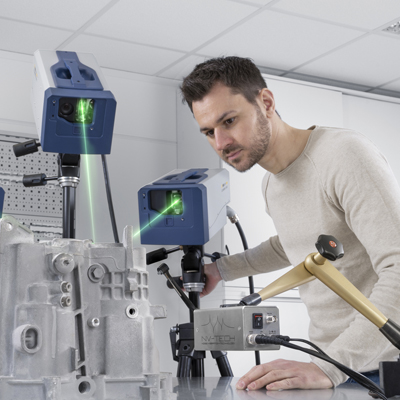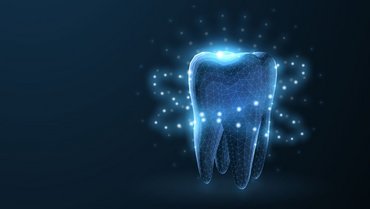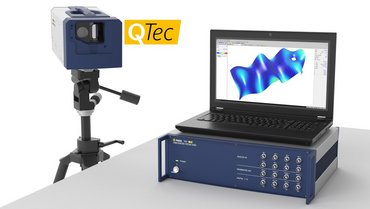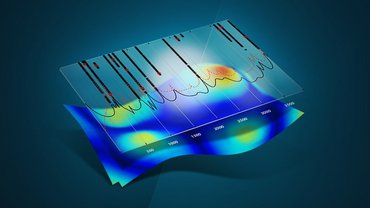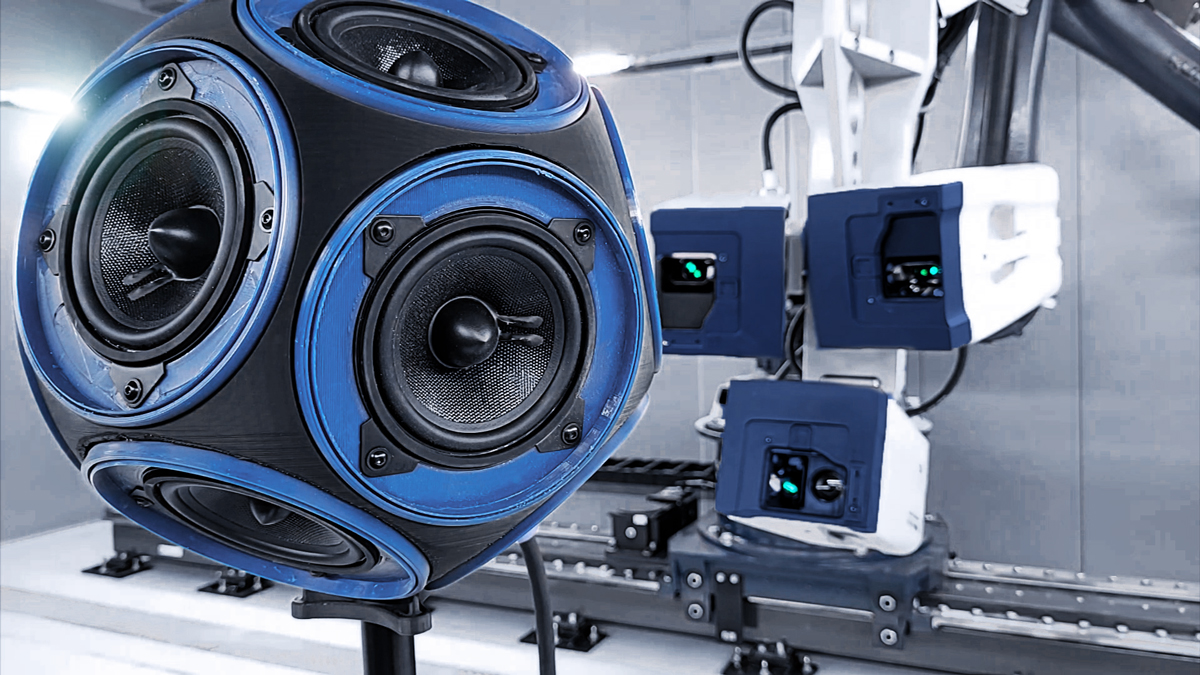
Automated 3D scanning laser Doppler vibrometry on omnidirectional loudspeakers for the testing of building acoustics
Noise protection and control play a major role in both professional and private environments. Airborne sound measurements help identify acoustic paths as a means of noise reduction as standard testing method. The underlying sound generation is typically achieved by using omnidirectional sound sources like sophisticated 360° loudspeakers, which are designed to ensure uniform sound radiation from a point source in all directions.
This innovative sound source of a dodecahedron is specifically designed for testing room and building acoustics, for example to verify the sound insulation of walls. In order to generate high sound emissions over a wide frequency range, all integrated individual loudspeakers are required to vibrate phase-synchronously. The structural dynamics of the membranes play the decisive role, as they determine the final vibration characteristics and thus the overall deflection of each loudspeaker. The quality of such a loudspeaker is primarily determined by uniform radiation. This is described by the magnitude ratios and the phase relationships between the individual loudspeakers.
The automatic structural test station RoboVib® allows the complete characterization of the vibrational dynamics from all directions on the omnidirectional loudspeaker by the company NTEK S.R.L., with the underlying model of a dodecahedron.
Experimental setup
Moving sequentially to different positions, RoboVib® is able to record each loudspeaker optimally. While staying in one of these positions, three synchronized lasers perform a vibrometer scan on the entire surface of the respective loudspeaker before the measuring heads automatically move on to the next loudspeaker membrane.
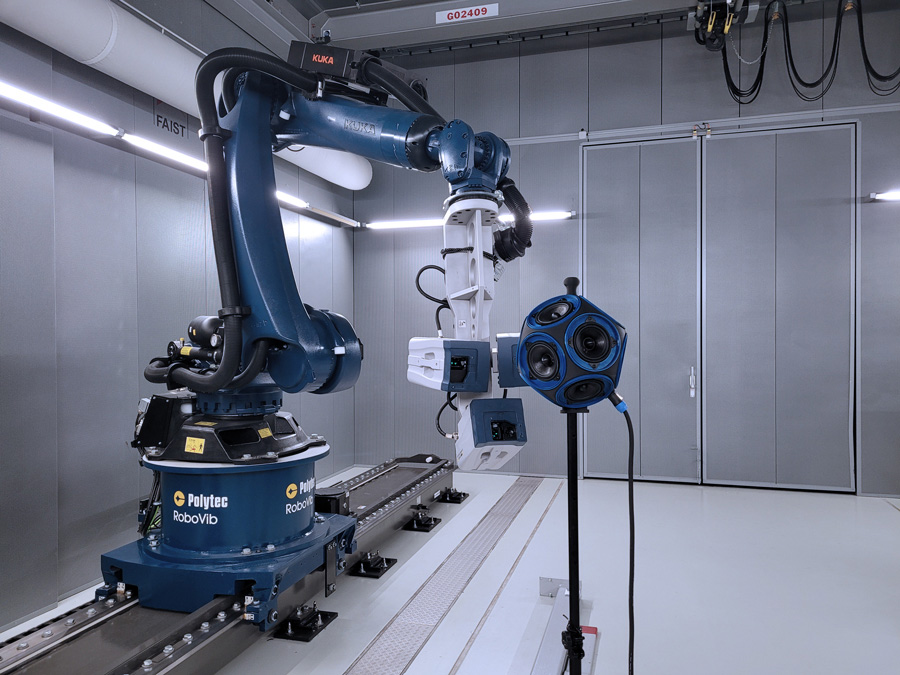
Straightforward 3D visualization of measurement data
As a result of all scan points, the 3D animation provides information about the magnitude and phase of each scan point. As shown in Figure 2, the RMS value distribution of the velocity magnitudes are one of these insights. Thanks to the high-resolution measurement grid, the deflection shapes of the loudspeaker, which become increasingly complex with higher frequencies, can be visualized immediately after the measurement.
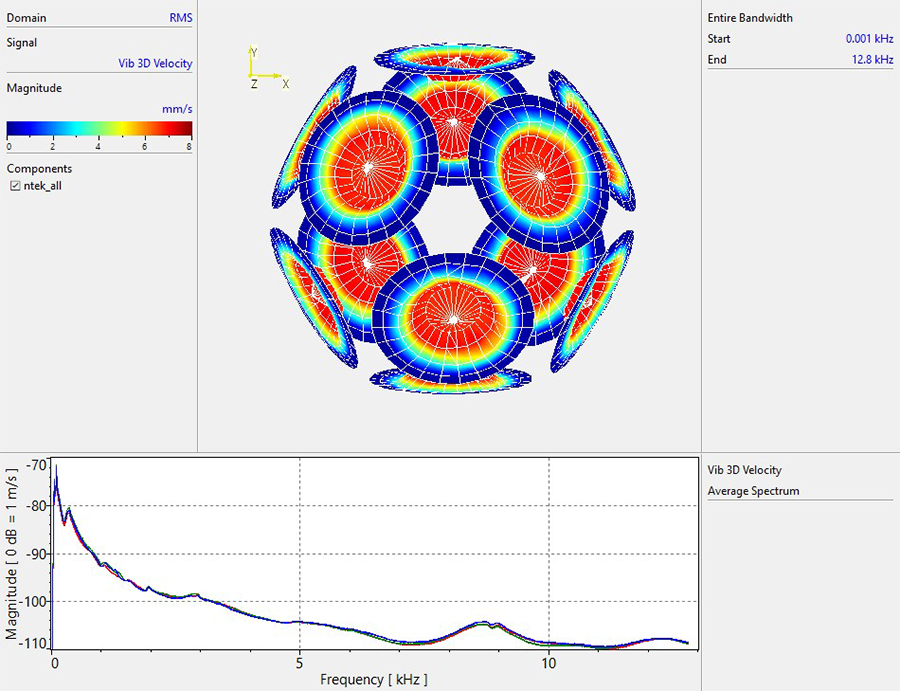
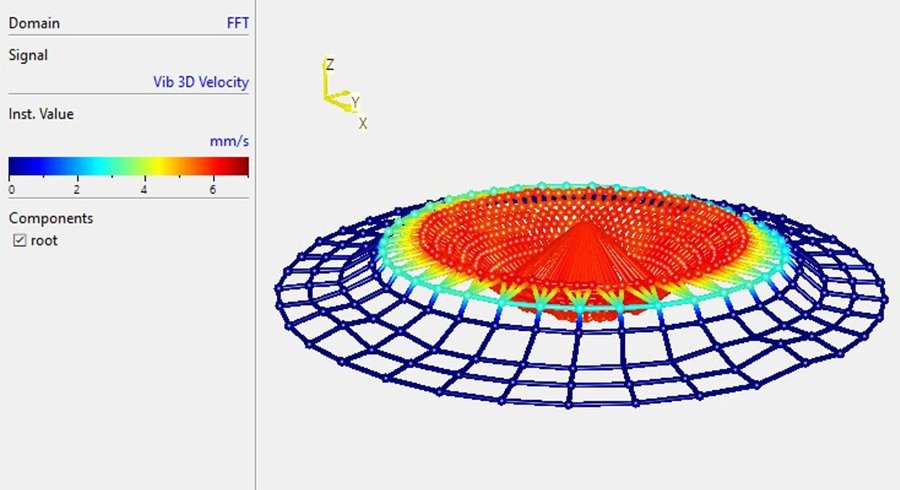
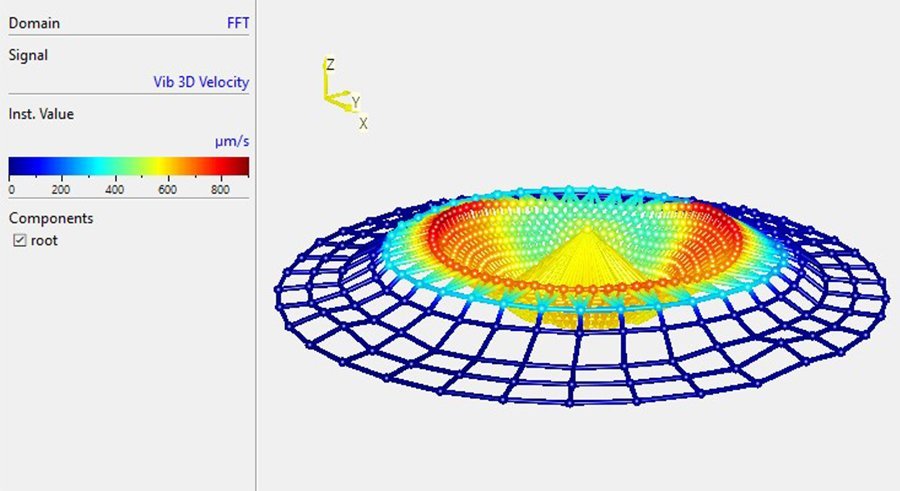
A comparison of the orthogonal vibration in the center of each membrane reveals the phase synchronicity between the different loudspeakers. Here, in addition to the magnitude responses shown, the phase responses are also shown, with one of the loudspeakers as a phase reference.
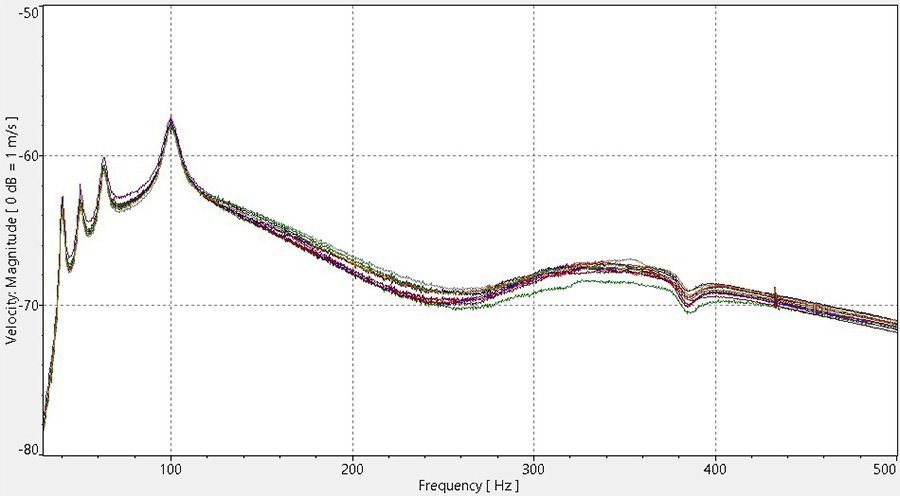
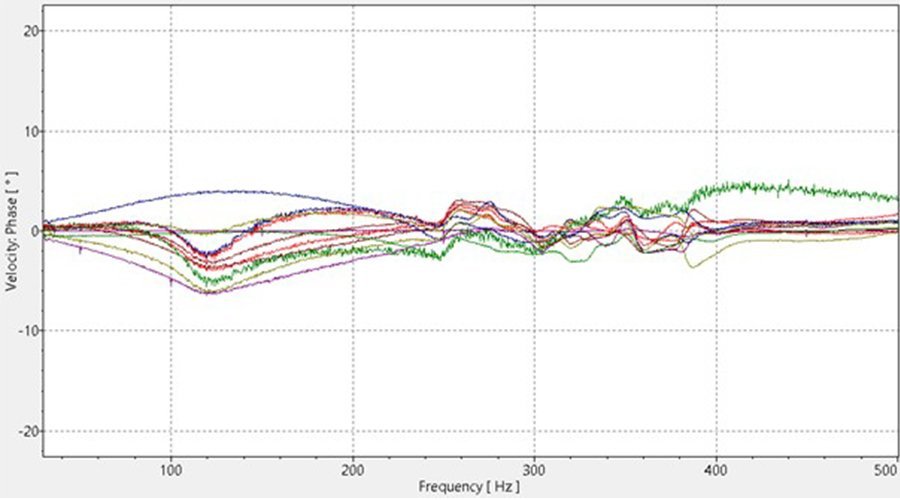
The performance of the dodecahedron depends not only on the synchronicity of the individual loudspeakers but also on the mechanical stiffness and robustness of the housing. Here, a vibrometer scan with RoboVib® shows the low vibration behavior of the dodecahedron housing compared to one of the loudspeakers.
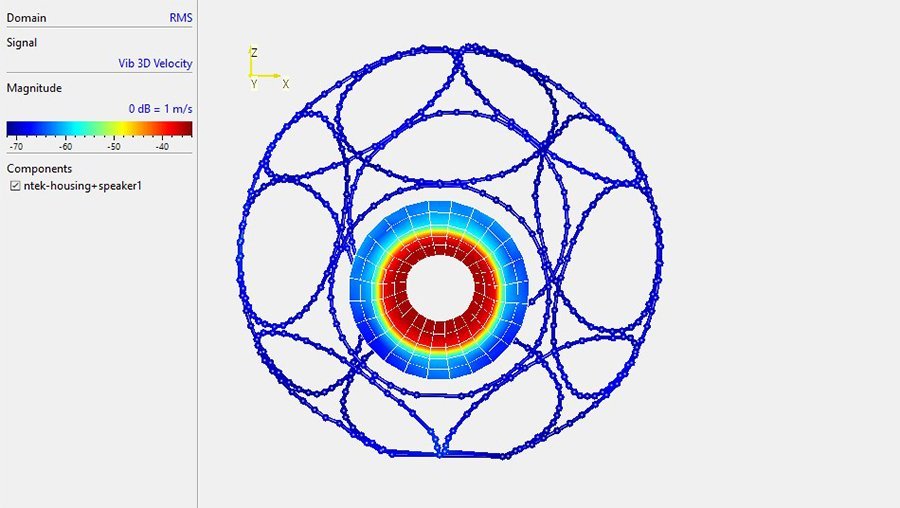
One of the major advantages of the robot-assisted laser scanning vibration measurement is its unlimited spatial resolution, especially in comparison with alternative measurement methods like mounting accelerometers. In addition, the high-precision laser measurement ensures unaltered results because its non-contact and mass-free working principle. These unaffected measurement results visualized as animated 3D operational deflection shapes shown in the evaluation software are the proof of quality and high fidelity of this NTEK dodecahedron.
We would like to thank NTEK S.R.L. for the insightful collaboration.
Images courtnesy: Images courtnesy of Polytec GmbH.
